Most manufacturers designed backpacks with inbuilt solar panels, which let you carry your essentials along with absorbing sunlight and convert into electricity. It turns into a portable charging station to charge your camping gadgets. Looking to invest in a solar backpack, we suggest you consider the following key points before buying. Capacity – The maximum volume of the bag is defined as the size/capacity of the backpack, which is measured in liters (L). Here are a few suggestions that help you to choose the right one.
The general size/capacity of the backpack will range from 15 – 25L, which offers enough space to store and carry your things. The bag capacity with 8 – 10L range will only handle small loads and is perfect for athletes. The backpack for long-distance hiking will range from 30 – 100L. It allows you to carry a large amount of things. If hiking for longer days, prefer to choose a bag with at least 60L capacity.
Wattage – To charge your electronic devices, your solar panel should produce decent power (wattage or W). Most solar backpacks feature solar panels that range from 5 – 12W, in which 5W panels will generate 5V of power that is enough to charge smartphones. The higher the wattage, the faster it will charge, yet it also depends on the outside weather/limited sunlight. It would be a bit overwhelming to find your perfect option among numerous models. So, we are providing you with a list of the best solar backpacks (after thorough research and testing various products), and a detailed “Buying Guide” related to solar backpacks. Go through them to know how to pick the right one based on your requirements.
8 Best Solar Backpacks In 2023
8 Best Solar Backpacks In 2023 Reviews
1. Eceen Solar Backpack
Compared with other solar backpacks and solar backpack brands, Eceen and its offerings can be a viable option if you want a heavy-duty backpack. Eceen’s solar backpack is present in the 1st position in this article as it is the largest solar backpack model present here in this article. Thanks to its insane capacity rating of 42 liters, storing a lot of items at once should not be an issue at all for most users. You also get a pretty good power output from the solar panel of this solar backpack, rated at 7 watts for decent charging speeds. This solar backpack from Eceen comes backed up with a 1-year long warranty as well. Best Features:
Offers a capacity of 42 liters Rated power rating of 7 watts Comes with a 1-year long warranty
Pros:
Very large solar backpack for storing multiple items Offers a decent charging speed Well built solar backpack with decent warranty
Cons:
A bit on the bulky side
2. Voltaic Systems Solar Backpack
Voltaic System holds the honor of designing the world’s first solar backpack. The brand manufactures a wide range of solar-based devices that are perfect for travel and other outdoor use. This backpack features a solar panel made from monocrystalline solar cells that generate enough power to charge your laptop in less than 6 hours. The backpack is equipped with a 24,000 mAh laptop battery. You don’t always have to depend on sunlight to charge your devices. It has three ports – USB, USB Type C, and hi-voltage laptop output to charge your devices on the go. The solar backpack is made from lightweight, UV resistant fabric that makes it durable and easy to carry. The fabric is recycled from PET, so in a way, you will be contributing to society. The backpack has 25l of storage space with a dedicated sleeve for 15 inches laptops and tablets. Furthermore, the clamshell design allows for easy access. Voltaic System offers a 2 year warranty on the solar panel and an 1 year warranty on the battery pack for this product. Best Features
Large capacity of 25 litres Rated power rating of 9 watts 2 year warranty on solar panel and 1 year warranty on battery pack
Pros
Fast charging of devices Large battery capacity Durable backpack made from recycled PET
Cons
Big and bulky
3. Haweel Solar Backpack
Haweel can be another great option if you are looking for backpacks that are also functional as it offers a few handy products like its solar backpack, which allows you to easily charge your mobile devices on the go. With the Haweel flexible solar backpack, you can expect high charging speeds since it is the most powerful option present in this article. Even though you get a lot of storage space inside this backpack, Haweel does not mention a specific capacity rating, which might be an issue for many. Coming to its charging performance, it uses a powerful solar panel, which is rated at 14 watts for excellent charging speeds. You also get a 1-year long warranty with this solar backpack making it decently reliable at the given price tag. Best Features:
Uses a flexible solar panel design Rated power rating of 14 watts Comes with a 1-year long warranty
Pros:
Excellent charging speed performance Practical and compact design Offers a great build quality
Cons:
Does not mention a capacity rating
4. LifePod Solar Backpack
Even though it might not be the most feature-rich or the best performing option out there, LifePod and its solar backpack can be a great option for many budget buyers. If you are on a budget, then you should go with the LifePod solar backpack since it is the cheapest option in this article. Even though it has a very low price tag, you still get a decent amount of space inside this bag. The external USB ports of this solar backpack are easily accessible for easily charging any mobile device of your choice. Unlike most other budget solar backpacks out there, this one also comes with a 1-year long warranty for your peace of mind. Best Features:
Strong and durable construction material External USB port for charging devices Comes with a 1-year long warranty
Pros:
Affordable solar backpack Includes an easy to access USB port Offers a decent warranty period for the price
Cons:
Lacks any capacity or wattage rating
5. Kingsons Solar Backpack
Kingons is another brand of solar backpacks that is a bit premium but offers many handy features for the price tag, making it ideal for most users. As it is a premium option, the Kingsons Beam solar backpack is the most durable and reliable option present in this article. Other than that, it also offers a decent capacity rating of 19 liters. Talking about the charging speeds, they are also quite good thanks to the fairly high wattage rating of 8.5 watts offered by this solar backpack. As for the best feature offered by Kingsons in this solar backpack is its lifetime warranty, which makes it the most durable and reliable option in this article. Best Features:
Offers a capacity of 19 liters Rated power rating of 8.5 watts Comes with a 1-year long warranty
Pros:
Excellent reliability and durability Offers a decent capacity rating Uses a large and powerful solar panel
Cons:
Slightly expensive when compared with others
6. Sunnybag Solar Backpack
SUNNYBAG has been in the business for several years and have proved their mettle several times when it comes to the solar panel backpacks. They allow you to charge your electronic products wherever you go. This fashionable backpack that features a removable powerful 6 watt solar panel with an in-built USB port. The detachable panel makes the product versatile. It also features an LED panel that displays the power and other necessary details of the solar panel. With an efficiency of 22.4% and 6 watts power, this backpack can charge several gadgets like power banks, smartwatches, digital cameras, iPads, and smartphones through their integrated charging port. Further, this backpack has a sophisticated design that has a volume of 15 litres with a 15” padded laptop compartment which makes it perfect for regular usage. This backpack is lightweight and made of the ripstop fabric making it water-repellent and insulated for increased resistance. The company offers a warranty of 12 months. For some users, the zip became defective after some months. Best Features:
Offers a capacity of 15 litres Rated power rating of 6 watts Comes with a 1-year long warranty
Pros:
Versatile product with a detachable solar panel. LED panel to display the necessary information. Ripstop fabric makes it water-repellent and insulated.
Cons:
The zip of the backpack is not durable.
7. Jauch Solar Backpack
Jauch has launched a backpack which has a volume of 40 litres and features a 6.5 watts waterproof solar panel. It features an anti-theft design with hidden zippers and no compartments at the outer portion of the backpack. This solar panel backpack features a 5 volt USB outlet which is convenient to charge the tablets, smartphones and GPS devices while travelling in remote locations, or while camping or hiking. The smart carry design allows air circulation on the back. With the punched foam layer and the hip fins, it also provides a great climate comfort. The easy-adjust straps with the hip belt makes it suitable and comfortable for all body types and makes it suitable for regular use. The sports-quality PVC fabric makes it suitable for all kinds of rugged environments. It features multi-layer storage with purpose-driven pockets of different sizes and a 15.6-inch laptop compartment. All the things can be organised easily and accessed with ease. But, the charging port is on the exterior which makes it difficult to carry in the rainy season. Best Features:
Offers a capacity of 40 litres Rated power rating of 6.5 watts Comes with a 1-year long warranty
Pros:
Smart carry design. Anti-theft design. Purpose-driven pockets.
Cons:
Some users complained of the zipper durability.
8. SolarGoPack Solar Backpack
SolarGoPack is a durable, stylish and cool backpack which features a solar panel that can charge smartphones and other electronic gadgets. This backpack has a new technology solar panel with an included 12,000 mAh lithium-ion battery that has a 5 watts power outlet. This can also use indoor light to charge the battery along with the sunlight. It has a waterproof material which has a capacity of 35 litres that makes it durable. Also, this backpack features several device adapters too for convenient use. This is suitable for regular use and can be used to take you to sports, jobs, travels, on-the-go, schools and all other events. However, some people complained that it is smaller than expected. Best Features:
Offers a capacity of 35 litres Rated power rating of 5 watts Comes with a 1-year long warranty
Pros:
Stylish and durable. Several device adapters. Suitable for regular use.
Cons:
Some people complained that it is smaller than expected.
How to Choose the Best Solar Backpack
Solar backpack, with its inbuilt solar panels, is the best idea to have a sufficient power source in remote areas. However, there are various factors to consider while shopping for solar backpacks. Here we have mentioned some of the essential features that have to be taken into account to choose the right one, as per your requirement.
1. Bag Size & Capacity:
The size or capacity of a backpack will let you know how much stuff you can place into the bag before it tears/rip out. Simply, it is the maximum volume of the bag and is usually measured in liters (L). Based on the bag’s dimensions, most companies calculate its capacity/size, while others offer extra side pouches or compartments. The general size/capacity of a backpack will range from 15L – 25L, which offers sufficient space to store and carry some books, laptop, clothes, water bottle, and other miscellaneous items. However, the size is not huge and provides the capacity to easily carry your daily essentials. We notice smaller backpacks that range from 8L – 10L, which can handle small loads and are a perfect option for athletes, like cyclists or those having short hiking excursions. While long-distance hiking requires backpacks that range from 30L – 100L, which can handle huge loads or a large set of equipment, such as camping supplies. Make sure to pick a backpack of at least 60L capacity while hiking for more days.
2. Wattage:
The main purpose of this solar backpack is to charge a smartphone and other electronic devices whenever you need them. For this, a solar backpack should have a decent solar panel. Different solar panels charge the phone at different speeds based on their performance ratings, which is determined by the wattage (W). Most smartphones will charge at 5V, and to produce this power, you need 5-watt (or more) solar panels. The range of solar panels in most solar backpacks will be 5W – 12W. Since a solar panel with less than 5W will take a longer time to charge the device. So, avoid picking it as it is not much useful. While it is a bit rare to see a bag with a solar panel higher than 12W. Keep in mind that a solar panel with higher wattages won’t mean faster charging, yet it helps you on cloudy days when there is limited sunlight.
3. Charging Time:
One has to consider the charging time needed for their solar backpack before making its purchase. Usually, high-capacity solar panels need more charging time and thereby provides the most substantial and prolonged charge. Alternatively, low-capacity panels will charge faster and also quickly runs out of power/charge. Expensive or premium solar backpacks will fully charge your smartphone within 2 – 3 hours of sunlight. On the other hand, cheaper models with inadequate solar panel range will charge the phone in 5 – 6 hours (or more). Although, the condition of sunlight (normal or cloudy or sunny) observed by the panel will make a lot of difference, yet most solar panels will quickly charge the devices compared to other models.
4. Device Voltage and Usage:
Different solar-powered backpacks come with different specifications, in which some mentions specific voltage that is lower or higher than your device requirement. For knowing its right voltage, you have to check your most-used devices like tablets or smartphones. Then check if the battery pack in the backpack will meet their requirement. If the gadgets are USB powered, then they need a 5V charger. Do you use this solar bag daily? Then keep in mind that most battery packs aren’t capable to charge and discharge. If any electronic device requires immediate charging, then you must have any of these two options. It ensures you have stored sufficient power in the battery pack (or) the solar-powered backpack allowing direct charging (directly connect a cable to the solar panel). Direct charging is quite useful whenever the battery runs out of power and you have to charge directly from the solar panel (which observes, collects and converts solar power). Yet, one has to find a solar backpack with an appropriate connector that allows direct DC charging of devices/gadgets without damaging them.
5. Solar and Battery Power Capacity:
The solar backpack is capable to accommodate various devices or a minimum number of gadgets and also as tool backpack you carry with you on a trip. Mostly, pick a model with a high-capacity solar panel that charge and produce a decent amount of electricity in a short time. Check to know the full charge of the device in mAh (milliamp hours) and compare if the backpack battery’s capacity match or exceed that value. Mostly, experts suggest picking a battery pack with 5% – 10% more power capacity. Also, ensure the battery pack initially gets fully charged to make sure it charges other devices fully. Generally, lithium-ion batteries are quite strong, durable, and last longer, which makes them the most preferred option. Apart from that, one can find a solar backpack that stores the remaining charge into the battery.
6. Removable Solar Panels:
Some solar backpack models offer removable solar panels rather than sewn-in solar panel models. This removable solar panel will make it easy to remove and place the panel in direct sunlight while using the rest of the backpack (as a normal one). However, detachable solar panels make it easy to grab the solar power required for your devices. It is especially useful while spending most of the time indoors (i.e., away from sunlight). If you are a hiker, adventurer, or camper, who spend most of the time outdoors using the backpack, then it doesn’t matter much. At times, the position of the backpack won’t let the solar panel catch the sunlight, particularly while walking around. Want to maximize the power produced by solar panels, then ensure it should be detachable to adjust the panel position to make it exposed to the sun for its proper functioning.
7. Charging Compatibility:
Most chargers are designed only for smaller devices. While a few solar backpacks give sufficient energy to maintain the smartphone well charged, which is perfect when using it only in emergencies. Other solar backpacks provide enough power to charge electronic gadgets like smartphones, DSLR camera, GPS unit, and laptop. It is a perfect option for hiking photographers, and great when spending efficient time in the wild and require to keep the device running.
8. Weight:
Are you planning to go on longer hikes or overnight treks? Then it is a must to consider the weight of your backpack. A solar backpack with a slightly heavier weight is perfect for day hikes, as it let you carry food, water, and less gear. The weight of the backpack becomes crucial whenever the hiking distance increases. So, purchase the lightest backpack if the extra weight is replaced for more volume or solar power.
9. Durability & Weatherproofing:
Sometimes, we notice a few so-called the best solar backpacks will face issues with their durability, and longevity (lifespan). For instance, one may notice the battery of their backpack dies after using it for a few months (or) experience problems with the USB port connections. All these electronic issues are quite common while using cheaper solar backpacks. When it comes to durability, pick a solar backpack made of top-notch materials and offers weatherproofing that sustain any external conditions and works well. It should be waterproof without leaving your digital devices wet/damp.
10. Wall Outlet Charging:
One has to place the solar-powered backpack outside, where there are perfect sunlight conditions for several hours a day to grab the essential energy used to charge your electronic devices. Practically, it won’t happen always due to climatic conditions (like rainy or cloudy days). So, it is always better to purchase a solar pack with a power bank that comes with AC outlet charging capabilities. This means the power bank gets charged from either a regular wall AC outlet or solar panels. However, most people use solar energy from their solar backpack as a top-up to keep the power up (charge) the power bank while walking around.
11. Pockets, Wires, Sockets, & Plugs:
It is essential to select a solar-powered backpack that has several plugs and cables to charge and accommodate various electronic devices. Also, it is good to check for a backpack with several pockets to store your water bottle and other items. Even sockets are quite useful that let you store the cellphones and devices when charging.
12. Budget:
Not only for a solar backpack, yet we recommend you set a specific price range before buying any product. Thus, it helps to narrow down your search options and thereby ease up your decision process. The general price range of solar backpacks will be $30 – $500, based on their size, power, and charging time. Irrespective of the price, it is quite essential to pick a backpack that perfectly suits your requirement.
13. Warranty:
If you are getting a backpack, then it is highly important to make sure that it is a strong one so that all the items inside it stay safe and secure. One of the simplest ways to ensure this is to check the warranty offered by the solar backpack. Thankfully, most solar backpacks out there come with a 1-year long warranty or longer (2-year, 3-year or 5-year) for your peace of mind. Some models even offer a lifetime warranty, which can easily last for a long time.
What is a Solar Backpack?
A solar backpack has an integrated solar panel on the back, which allow the bag to receive solar energy from the sun, and gets charged as you go outside by wearing it on the back. However, some backpacks have sewn-in solar panels, while others have detachable panels that can be placed anywhere to charge effectively. One has to use this solar energy to charge their devices like smartphones, laptops, tablets, cameras, etc. A few high-end models have power banks included, which means the solar energy is stored in the power bank and then use whenever you need to charge the devices. Other solar backpack models forcefully let you charge the device immediately with the solar energy, as it cannot be stored for later use. The solar backpacks are available in various sizes, and you need to choose them based on your requirements. For instance, pick a small 15-liter backpack that is meant for storing tablets, smartphones, and laptops. Or choose a larger 40-liter (or more) bag designed for hiking, camping, and outdoor pursuits. Some solar-powered backpacks offer power banks to charge up the power bank from both sources – electric AC wall outlet and sunlight. This is a good idea to use a combination of two and thereby prevent you from running out of the power to charge devices.
How does a Solar Backpack Work?
A solar-powered backpack is one of the best modern technology that creates and promotes green energy. So, it becomes a convenient option for hikers and campers to charge and use electronic devices on trips. Usually, a solar charging backpack comes with a monocrystalline solar panel, charge controller, battery, cords, plugs, and light bulbs. With all this setup, they offer a power of 120W per day that is more than enough to charge devices. The solar panels of the backpack will collect solar energy with its built-in photovoltaic cells and semiconductor. Whenever the sunlight hits the solar panel, then the semiconductor absorbs this power to produce an electric current. Then this produced current is sent to charge either lithium-ion battery or controller for later use (based on how your backpack work). Usually, a panel with an hour charge of sunlight is sufficient to charge the smartphones for about 1.5 hours. If having a lot of devices, ensure to charge the backpack for about 10 hours. It offers nearly 15 hours of stored energy. Here, the solar panels are placed at the back of the bag, and this design will allow the backpack to charge comfortably, while walking. Mostly these panels are waterproof and lightweight that can produce 4 watts of power based on the circumstances. Apart from its charging, solar backpacks offer various free plugs and wires based on the brand/manufacturer. Few bags offer USB plugs and cellphone adapters. All these will make you convenient to use, particularly while having a lot of devices.
Different Types of Solar Backpacks
At first, solar backpacks are designed for army and military use. But now, it becomes a must-have item for hikers or campers. Since they not only offer space to store your clothes and essential things, but also provide a power bank and a charger to charge the electronic devices. With its gaining popularity, they come in different sizes, styles, features, and designs. So, there are no differences in their types and all it is different from its designs.
The voltaic solar backpack has the standard design and construction of a solar panel, cords, charge controller, batteries, and plugs. With all this setup, it accommodates most of your electronic devices that range from cell phones, tablets, MP3 players, laptops, and others. However, it can provide 120W per day on a 10-hour charge. If charged for a longer time, it generates more power based on the model/manufacturer. Some solar-powered backpacks have light bulbs & LED indicator lights, which allows campers and hikers to make them use conveniently. As it provides extra protection and contingency measures. Some models have impressive designs having anti-theft, which is quite useful in the mountains. This helps to protect your items or things from thieves or animals. Some backpack models claim significant capacities as few manufacturers offer even up to 42 liters capacity. While other offer hydration packs that let you carry water with you conveniently. The backpack with this hydration pack is suggested for hikers or those who won’t require a lot of space to store. Some backpacks have detachable solar panels, while others are sewn-in models, in which removable panels let you charge it effectively. It is lightweight and won’t have any hassle while walking. With this type, one can detach the panel after having a full charge.
Benefits and Drawbacks of a Solar Backpack
The solar-powered backpack becomes an excellent option for campers and hikers. With all its amazing features, it provides a lot of benefits and drawbacks. Here we are mentioning some of them.
Benefits
Eco-Friendly – Solar backpacks run on solar energy, which makes them eco-friendly, as they cut down the carbon footprint and help you to save and take care of the environment. Charge Your Devices – It is capable to charge electronic devices, which is useful while hiking, camping or in a place without near convenient grid power. Most products offer at least 1 – 2 USB ports that let you connect the tablet or smartphone to charge. A few models let you charge even larger devices like DSLR camera batteries and laptops. Easy to Use – You don’t be a hiker or camper to use this solar bag. They are designed to use it normally and easily to charge their devices (or) a normal backpack. Lightweight – The solar panels are made with lightweight, durable and flexible materials, which in turn, makes the bag lightweight and portable. As most of these solar bags weigh 2 lbs or less when they are empty. So, it allows you to carry on your back/shoulders without much strain. Durable – Usually these bags are made of rugged and heavy-duty material to withstand weather conditions. Also, the solar panels or their electronic components (cords or wires) are lightweight, waterproof and durable that make them last longer.
Drawbacks
Long Charging Hours – Solar backpacks take a longer time to charge. Usually, an hourly charge of a backpack produces 120W of power, which is sufficient to charge a phone for about 1.5 hours. If you are carrying multiple devices, then need more than 120W. You have to charge for 10+ hours to completely charge the backpack, which also depends on the outside weather. Limited Electric Capacity – It provides a limited supply of energy, as most models generate only 55 Watts power in a day. However, it is not enough when you want to share the backpack with others.
Conclusion
Just per the name, a solar backpack is essentially a backpack that offers inbuilt solar panels. While you cannot power large electric appliances with these compact solar panels, they are surely more than enough for charging mobile devices. As a result, you can use a solar backpack to easily charge your smartphones even on the go. Hence, we have mentioned the best solar backpacks up above in this article. All of them have mentioned along with their details, like their major features and options. You can also find a detailed buying guide related to solar backpacks up above in this article. And according to all these factors and details, here are favorite solar backpack recommendations:
If you are on a budget, you should go with the LifePod solar backpack as it is the cheapest option present in this article. Despite its low price tag, you still get a decent 1-year long warranty with it. As for its charging speeds, it can charge most smartphones in under 3.5 hours, which is good enough for the given price. While the Kingsons solar backpack might be a bit on the expensive side, its great build quality surely justifies the price tag. When combined with its lifetime warranty, it is easily the most durable and reliable option in this article. You also get a decent capacity of 19 liters and a wattage rating of 8.5 watts with it. The Eceen solar backpack is the largest solar backpack option present in this article. It offers a pretty large capacity of 42 liters so that you can store all of your needed items. You also get a decent wattage rating of 7 watts with this solar backpack for decent smartphone charging speeds.
Make sure to share your thoughts in the comments section. You can also post any questions down there if you have any! Comment * Name * Email * Website
Δ



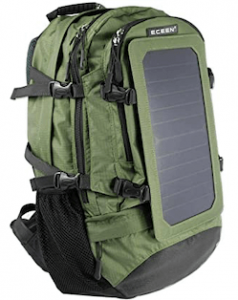
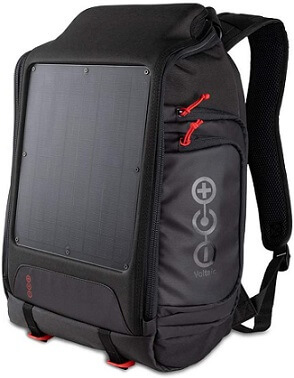
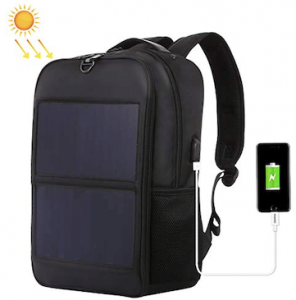

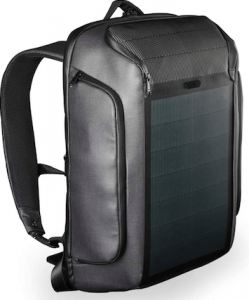
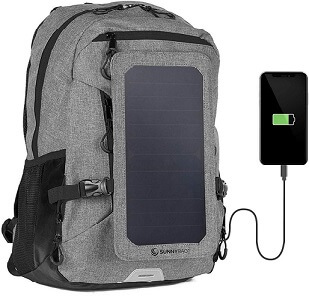
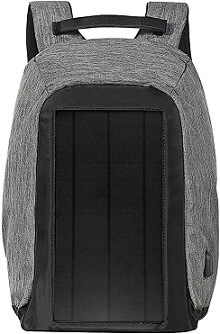
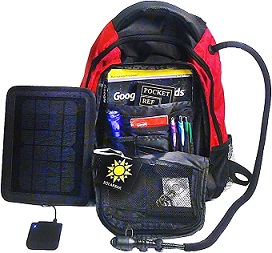


![]()